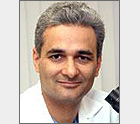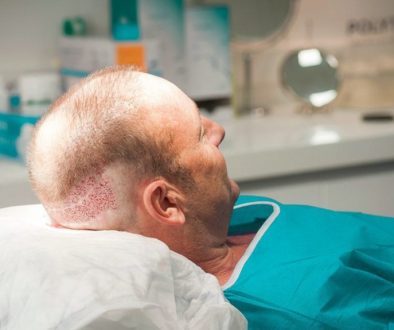What Hair Loss Patients Can Realistically Expect After Hair Transplant Surgery
Recently, recommended hair transplant surgeon Dr. Parsa Mohebi shared what patients can realistically expect after hair restoration surgery.
According to Dr. Mohebi:
 It is true most individuals, both men and women, are completely satisfied with the results they experience from hair restoration surgery as it enhances their physical appearance and brings emotional benefits. Many describe the changes they received after a hair transplant as exceeding their expectations. Even though these experiences are unique from one hair loss patient to another, one must understand hair transplantation is limited to what it can accomplish. Again, each hair loss patient is unique in themselves and the results vary person by person.
It is true most individuals, both men and women, are completely satisfied with the results they experience from hair restoration surgery as it enhances their physical appearance and brings emotional benefits. Many describe the changes they received after a hair transplant as exceeding their expectations. Even though these experiences are unique from one hair loss patient to another, one must understand hair transplantation is limited to what it can accomplish. Again, each hair loss patient is unique in themselves and the results vary person by person.
Androgenetic alopecia, or male patterned baldness, is an ongoing, progressive disorder that first manifests as thinning hair, and then hair loss. This is when predisposed hair follicles become affected. It is critical to understand one should never assume they can maintain the same hair thickness and density they had in their youth, however complete elimination of the appearance of baldness is possible. Hairline recession and overall hair thinning may continue to progressively evolve with age and time.
Most individuals cannot realize their hair is thinning until they have lost nearly 70% of their hair density in any area. What hair transplant surgery does is effectively relocate healthy hairs to areas which have thinned or fully disappeared. Unfortunately it cannot create new hair. The hair transplantation does nothing in stopping existing balding hairs from thinning and future loss, but the transplanted hairs last a lifetime because they have a different genetic makeup than the hairs prone to balding.
In addition to a hair transplant if necessary, a hair restoration physician may prescribe minoxidil (Rogaine) or finasteride (Propecia) to bring greater longevity to the already prone hairs. Ultimately beauty is relative to each person, and since balding is progressive, some individuals elect for a second transplant surgery over a period of time to better suit their hair restoration goals.
Here are some factors which directly influence surgical results and should be considered when setting expectations:
The number of donor hairs and the demand for those hairs. The greater the hair loss and affected balding scalp area, the more donor hair will be needed. The density of the hair following the surgery will be determined on how limited the donor hair is extracted.
The diameter (caliber) of the individual hair shafts. The thicker the hair, the greater the coverage which can be provided as opposed to the volume of fine hair, which has much less to offer.
The character of the hair, which if wavy, or curly, will create better coverage and density than would hair that is straight.
The difference between scalp tone and hair color, or density which increases the visibility of the scalp as the hair diminishes. For patients with darker hair and lighter skin, the contrast is increased and hair appears to be thinner, having less density.
The elasticity of the scalp. Larger sessions, also known as Mega and Giga-sessions, are common. In order for a hair transplant surgeon to perform these surgeries of 4,000+ follicular unit grafts safely, there needs to be a demand for such a large procedure and the presence of natural density. The scalp must have the proper elasticity level in order to accommodate the donor transplant, thus allowing the surgeon to perform the procedure with the highest level of safety and leave nothing more than a very thin scar which is not easily detected.
Future hair thinning and loss. Except for Norwood level VII patients who have lost the majority of their hair in the affected areas, it is critical to foresee the future when expecting continual hair loss and hairline recession. A second procedure, or use of medications such as minoxidil or finasteride may be prescribed to achieve the original objective.
Reviewing all available information is important when making a truly informed decision. When hair transplant surgery is considered, it is important to find the right hair transplant surgeon. Then you should discuss your goals with your surgeon. Let him/her give you some feedback and tell you how you can realistically achieve those goals. Your surgeon will tell you if your expectations are unrealistic.
When placed into the right hands, the life-changing benefits of a hair transplantation may even exceed all your expectations!! However those expectations should be set properly before surgery.
Dr. Parsa Mohebi
As usual, we thank Dr. Mohebi for his expert opinion and hope he continues collaborating with our Hair Loss Q & A blog!
_______________
Blake – aka Future_HT_Doc
Editorial Assistant and Forum Co-Moderator for the Hair Transplant Network, the Hair Loss Learning Center, the Hair Loss Q&A Blog, and the Hair Restoration Forum
Follow our community on Twitter
Watch hair transplant videos on YouTube
Get Proven Hair Loss Treatments at the Best Prices by visiting our new Online Hair Loss Product Store
Technorati Tags: hair transplant, hair restoration, hair restoration surgery, hair loss patient, hair transplantation, hair loss patient, Androgenetic alopecia, male patterned baldness, thinning hair, hair loss, hair follicles, Hairline recession, hair transplant surgery, balding, hair restoration physician, minoxidil, Rogaine, finasteride, Propecia, transplant surgery, donor hairs, balding scalp, hair transplant surgeon, follicular unit grafts



